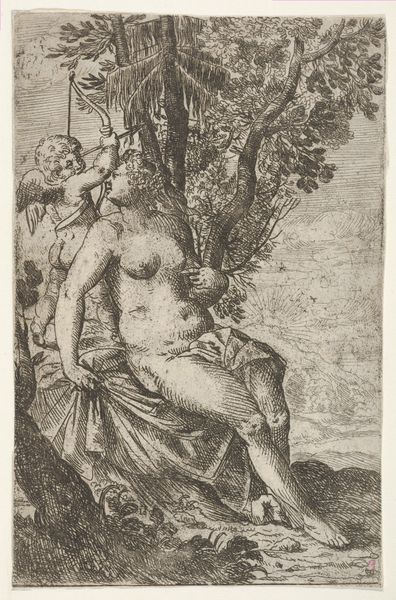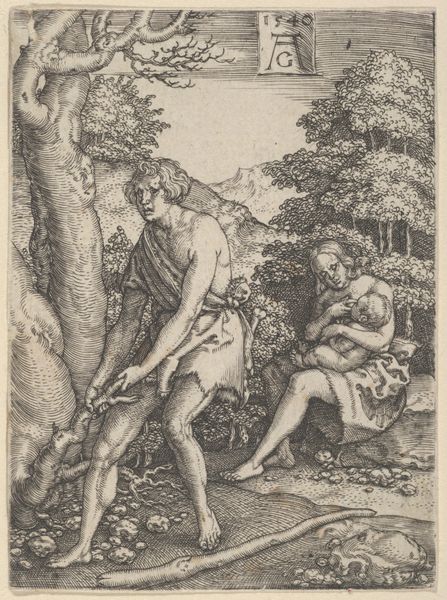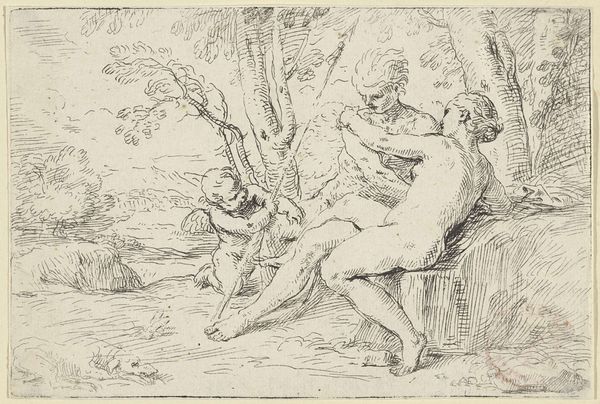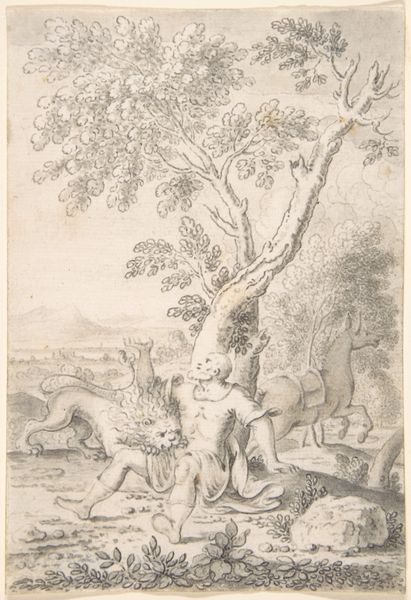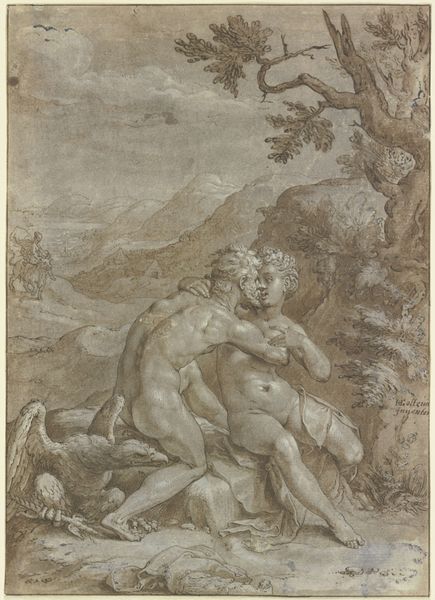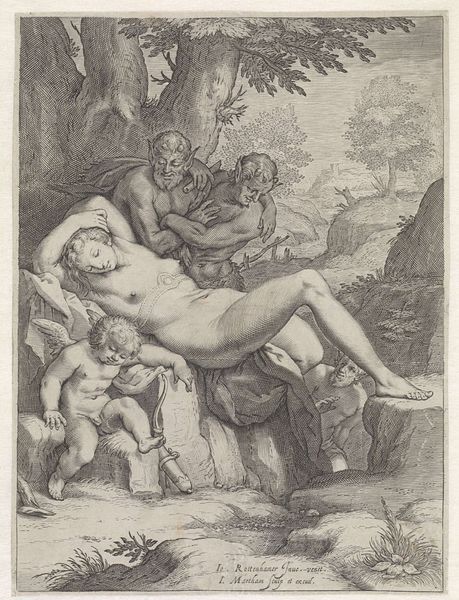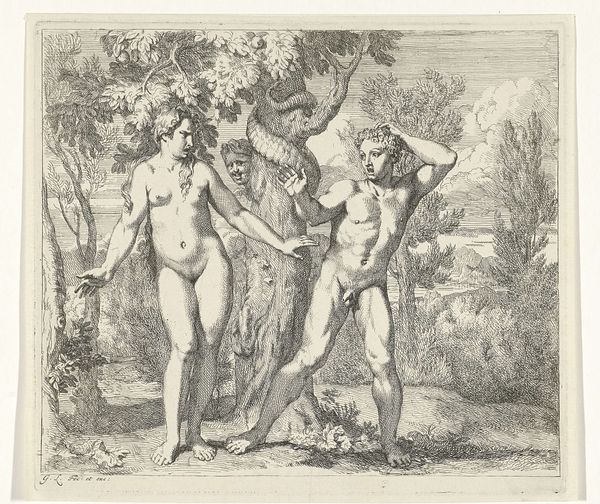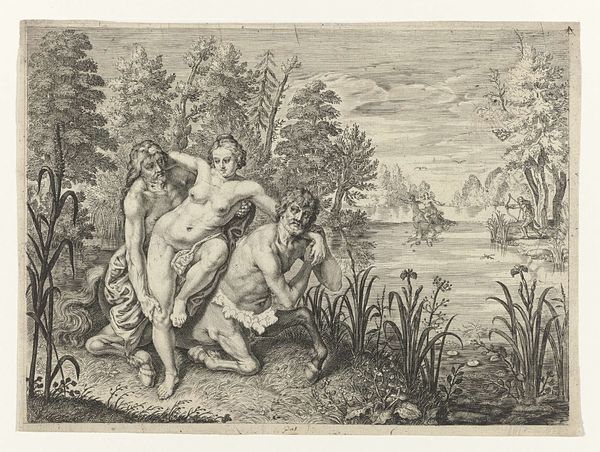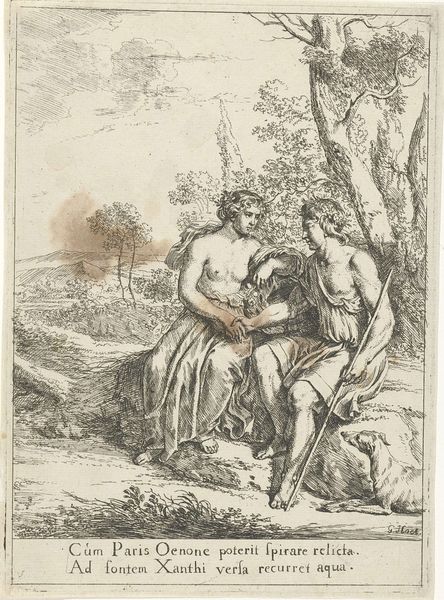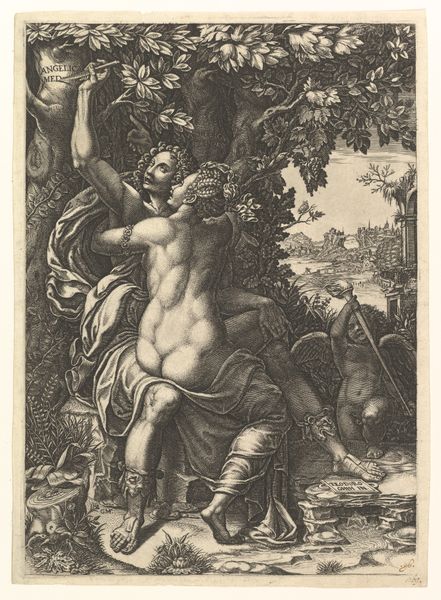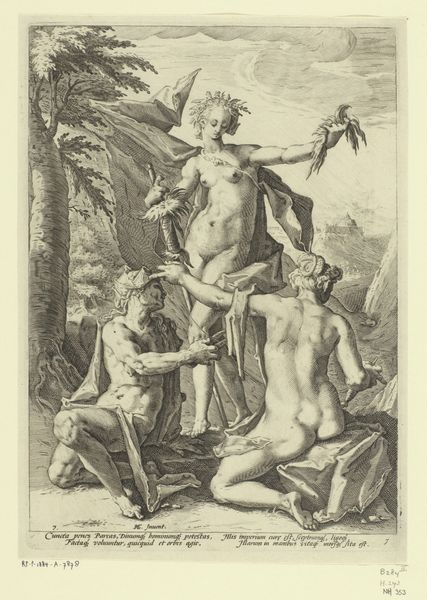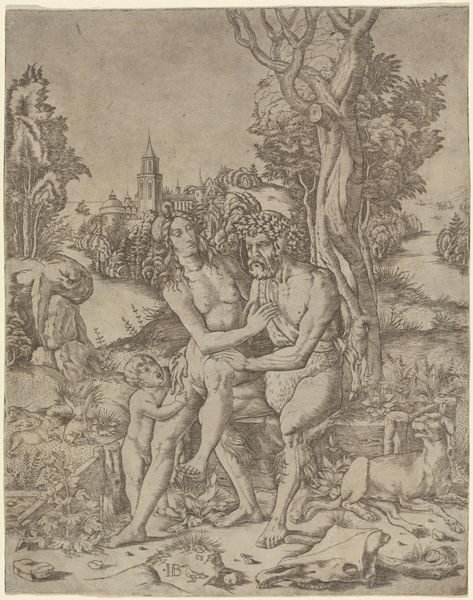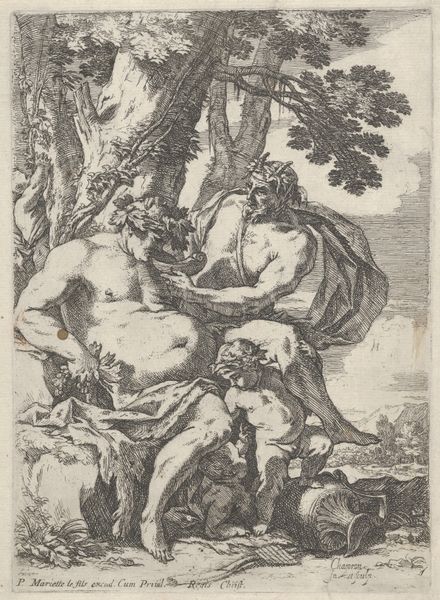
drawing, ink
#
drawing
#
narrative-art
#
baroque
#
pen sketch
#
landscape
#
figuration
#
ink
#
ink drawing experimentation
#
pen-ink sketch
#
pen work
#
history-painting
Dimensions: height 152 mm, width 144 mm
Copyright: Rijks Museum: Open Domain
Curator: Look at this ink drawing titled "The Rape of Europa" crafted by Hans Krieg sometime between 1600 and 1647. What’s your immediate sense of this piece? Editor: Ethereal melancholy. The muted tones, the sketchy lines… it’s like a half-remembered dream, tinged with impending sadness. There’s a fragility to it, wouldn't you agree? Curator: Absolutely. Notice how Krieg uses the pen and ink to define form. The composition uses soft and bold lines in the foreground, leading back through a detailed grove to reveal Zeus, as a bull, abducting Europa, the composition almost spirals around them. The artist directs your focus by obscuring less crucial forms within that spiral. Editor: Yes, the spiraling almost hypnotizes you into focusing on Europa’s abduction. Krieg does interesting work contrasting texture with line work—creating depth by altering our perceptions of shade. Even within the trees in the background, the overlapping ink almost creates a soft, billowing movement, yet in other places it sits like a shadow. I find that to be one of the key strategies that creates that mood. But tell me, as an artist, what story is he trying to get at by obscuring figures while illuminating forms? Curator: Perhaps it speaks to the nature of myth itself. A legend half-seen, half-understood. Maybe the lack of hard, clear line detail is a signifier for just that idea of myth itself, I also wonder if this more of a working drawing or sketch for a larger composition? Editor: Interesting. I see that and almost want to make it representative of a deconstruction of a story-- but instead what remains are a record and recollection instead of the even flow. Curator: I agree, and in the end I’m grateful for these kinds of renderings. Because if we had only pristine oil paintings and sculptures, so much of art’s living pulse would be lost to us, wouldn't you say? Editor: Indeed. It reveals the creative processes and the initial intent beyond the final display of artistry and beauty that are equally as fascinating. It offers an intimate look, or should I say, a fragmented recollection of this era.
Comments
No comments
Be the first to comment and join the conversation on the ultimate creative platform.
